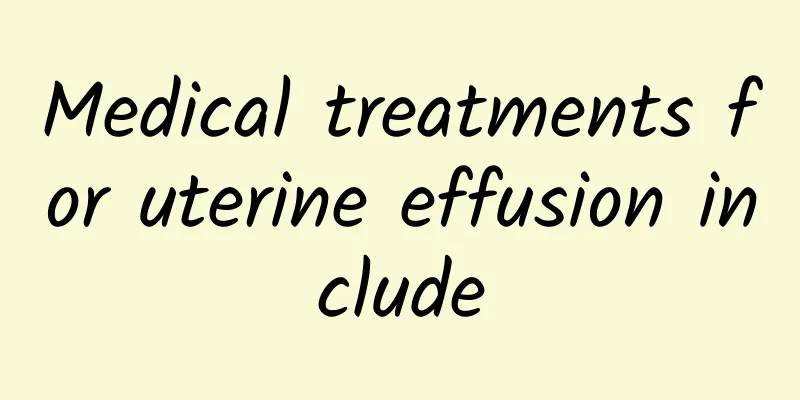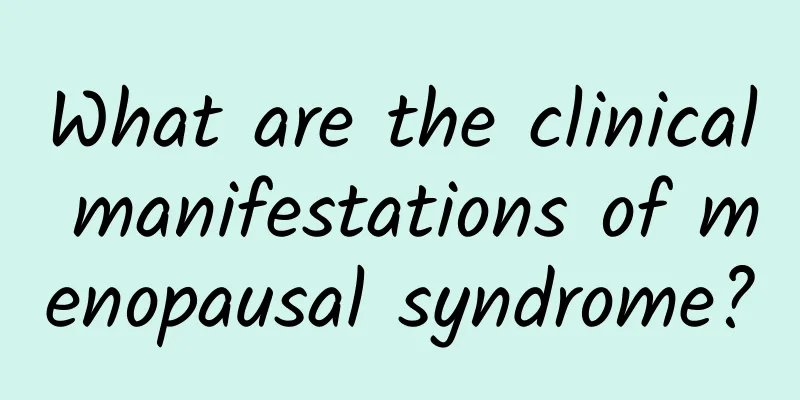Are endometritis and pelvic inflammatory disease treated the same way?

|
The treatments for endometritis and pelvic inflammatory disease are not exactly the same, because they are two different gynecological inflammations. Although some treatments may be similar, they still require personalized treatment based on the type, severity and specific cause of the disease. Generally speaking, endometritis is treated with antibiotics, while pelvic inflammatory disease may require combined treatment, including medication, lifestyle adjustments and even surgery. 1) Treatment of endometritis Endometritis is usually a bacterial infection of the endometrium. Treatment includes the following: - Antibiotic treatment: This is the most commonly used treatment method, and broad-spectrum antibiotics such as amoxicillin, cephalosporins or levofloxacin are often used. The specific medication should be selected based on the pathogen detection. -Treatment of pathological causes: If the infection is caused by residual tissue in the uterus (such as after miscarriage or delivery), a uterine curettage is required, combined with anti-inflammatory treatment. -Auxiliary treatment: Adjusting lifestyle habits and strengthening personal hygiene can also help recovery, such as keeping the vulva clean, changing underwear every day, and avoiding the use of irritating detergents. 2) Treatment of pelvic inflammatory disease Pelvic inflammatory disease is an inflammation of the pelvic area, including the uterus, fallopian tubes, and ovaries. Treatment is more comprehensive: - Combined antibiotic treatment: In case of acute pelvic inflammatory disease, cephalosporins and metronidazole, or erythromycin antibiotics are usually used in combination. The treatment time depends on the severity of the disease. -Physical therapy: Patients with chronic pelvic inflammatory disease can consider physical methods such as shortwave therapy and microwave therapy to promote blood circulation and relieve inflammation. -Surgical treatment: If the condition is severe and causes abscess or hydrosalpinx, surgical drainage or fallopian tube removal may be required. 3) The importance of distinguishing diagnosis and standardizing treatment Although both diseases are gynecological infections, their specific causes, locations and course of disease are different. Gynecological examinations, B-ultrasound, and inflammatory culture tests are needed to differentiate the diagnosis and avoid misdiagnosis and mistreatment. During treatment, the doctor's orders should be strictly followed, and medication should not be discontinued or changed at will. In addition, both partners also need to undergo necessary examinations and treatments to avoid cross infection. The treatment of endometritis and pelvic inflammatory disease cannot be generalized and requires careful identification and personalized treatment. If you experience symptoms such as persistent abdominal pain, fever, or leucorrhea with an odor, you should see a doctor as soon as possible for a clear diagnosis. |
<<: Treatment of cervical hypertrophy
>>: Can I get pregnant naturally with cervical adhesions?
Recommend
Causes of vulvar leukoplakia
What are the causes of vulvar leukoplakia? There ...
What are the characteristics of cervical precancerous lesions?
What are the characteristics of cervical precance...
Let you know what is the cause of cervical hypertrophy?
Let you know what is the cause of cervical hypert...
Does uterine fibroids have any effect on pregnancy? Does uterine fibroids have any effect on the fetus during pregnancy?
What are the effects of uterine fibroids during p...
Bacterial vaginosis is mainly spread through these 4 channels
Bacterial vaginosis is mainly transmitted through...
What tests should be done for cervical erosion? These 3 items must be done
The female reproductive system has internal organ...
Even if uterine fibroids are treated, don’t take it lightly!
After the uterine fibroids are cured, what else s...
What are the symptoms of cervical erosion? If you have cervical erosion, you will find these symptoms
The first symptom of female patients with cervica...
Things to note before abortion
Now many hospitals have introduced painless abort...
What are the treatments for vulvar leukoplakia?
What are the treatments for vulvar leukoplakia? W...
What should I do if my period is 10 days early and the amount of menstruation is small for two consecutive months?
What should I do if my period is 10 days early an...
Passion fruit is a treasure from head to toe ~ the king of juice, 2 dishes with sweet and sour taste
Passion fruit, known as the "king of juice&q...
How to regulate amenorrhea in a 48-year-old woman
After a 48-year-old woman has symptoms of amenorr...
Common symptoms of irregular menstruation
What are the common symptoms of irregular menstru...
How to treat uterine fibroids in women
Uterine fibroids are common benign tumors in clin...









